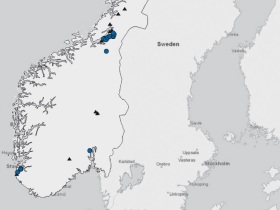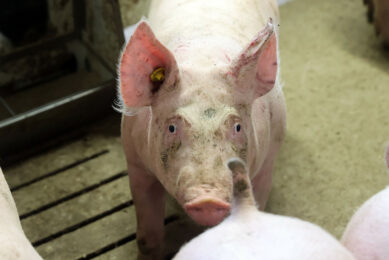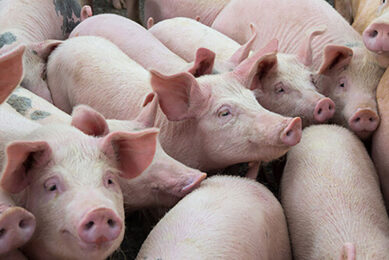Norway: pigs with H1N1 were infected by humans

Norwegian researchers suspect that the high number of pig herds infected with the pandemic influenza A virus (H1N1) is related to contact with humans.
In their online paper, Pandemic Influenza A(H1N1)V: Human To Pig Transmission in Norway?, published by Eurosurveillance, the researchers tried to find clarity as to the origins of the virus as found on 23 herds throughout Norway by October 26th.
Human viruses
Sequence analysis of pig viruses from the indexed farms now shows that these are identical or virtually identical to human viruses from the same geographical region.
The scientists write: “In this investigation, humans infected with the pandemic influenza virus seem to be the most likely source for the spread of the infection to the pigs, even though additional routes, like airborne transmission or transmission by vehicles cannot be ruled out at the moment. So far, no evidence has suggested that animals play any particular role in the epidemiology or the spread of the pandemic influenza among humans.”
First confirmation
The virus was first confirmed in Norway on October 10, 2009, after which an epidemiological investigation was performed by the Norwegian Food Safety Authority (NFSA). Initial thoughts of slaughtering infected herds were abandoned when it became clear that the growing number of infected herds had only been in contact with humans.
The scientists write: “At the same time, there was no evidence indicating there had been contact (pigs, staff, vehicles, etc.) between the new positive herds, and the possibility of airborne transmission was also ruled out due to long distances between the positive herds. Thus the sampling strategy was revised to include pig herds throughout Norway, having staff members with influenza-like-ilness (ILI) or confirmed pandemic influenza, should be sampled.”
Results
In Nord-Trøndelag County, in the period between 10 October and 26 October, a total of 39 herds were tested and 18 of these were positive for pandemic influenza. Of these 18 positive herds, a total of 15 herds were in contact with people diagnosed with either pandemic influenza or with ILI.
So far, in six of the 18 positive herds in Nord-Trøndelag County the clinical status of the herd has been recorded. Moderate clinical signs of influenza (coughing, fever) were recorded in four herds, while signs were mild to non-existing in two herds. In five of these six herds, the clinical signs in the pigs occurred after humans in contact with the pigs became ill.
In addition, during the period 12 October to 26 October, a total of 12 herds from six other counties were tested and five herds from three counties were positive for pandemic influenza virus. Also in these counties, the majority of positive herds are suspected of having contracted the virus from infected people.
Pig herds in Norway
The Norwegian pig herds have been considered free of swine influenza (the classical strain H1N1 and H3N2) as documented by a serological surveillance programme running since 1997. The pig industry in Norway is relatively small with approximately 2,700 herds and a little less than 1.5 million slaughtered animals in 2008.
The article was written by M. Hofshagen, B. Gjerset, C. Er, A. Tarpai, E. Brun and B. Dannevig (National Veterinary Institute, Oslo, Norway), T. Bruheim (National Veterinary Institute, Trondheim, Norway), I.G. Fostad (NFSA, Levanger, Norway), and B. Iversen, O. Hunges and B. Lium (Norwegian Institute of Public Health, Oslo, Norway).
Related websites:
• Eurosurveillance
• Norwegian Institute of Public Health
• Norwegian National Veterinary Institute
• Norwegian Food Safety Authority











